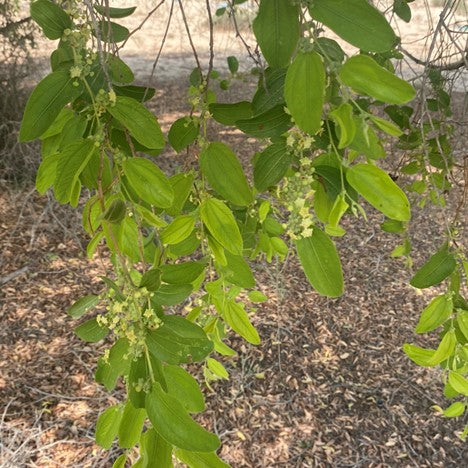Sidr Season
Forget spooky season. October and November mean it is Sidr Season in the honey world.
Ever wondered where that jar of golden deliciousness in your kitchen came from? Keep reading to find out…
The Sidr tree, also knows as Ziziphus Spina-Christi, is a small to medium-sized tree native to drier climates such as the Middle East and Northern Africa, built to withstand droughts. It can grow up to 10 metres tall and produces small white-yellow-green flowers.

The Sidr tree blossoms for a short period in October and November, which is when the honeybees collect nectar from these tiny flowers. Nectar is the sweet liquid that entices the bees to the flower. The bees land on the flower and suck up the nectar with their straw-like “proboscis” and collect the nectar in a little sac called a “crop”.

The nectar, along with water that they’ve collected, is stored in their honey stomach – a second functional stomach that forms the largest part of their intestine and where special enzymes start the honey-making process.

When back in the hive, the bee will regurgitate the contents of its honey sac and store it in the cells within the honeycomb that they’ve made. Worker bees vigorously “fan” their wings over the nectar, causing the liquid inside the cells to slowly evaporate. The drying process, along with natural enzymes added to the nectar, transforms the relatively thin liquid into a much thicker honey.

The honey in the cells of the comb is then capped with beeswax to prevent it from becoming contaminated or going off. You can see clearly in the image below which cells have been capped and which are still to be filled with honey.

At the end of the Sidr flowering season and when the hives are full, we can harvest the honey! We never harvest all the frames as we always take care to leave enough for the bees' own use. Firstly, we light a smoker to make the bees dozy, so they don’t feel threatened and won’t be too quick to sting!

We pull out the honeycomb frames and gently brush off any bees still holding on. After scraping off the wax caps, the frames are placed straight into the metal honey extractor.

The frames inside the drum are spun manually at high speed to force the honey out onto the sides of the drum where it drips down to the bottom. The honey is then poured out of the valve at the bottom and is collected in a bucket.

We strain this using a cheesecloth to remove pieces of beeswax and ensure nothing but the smoothest, purest honey goes into the Blossom Honey jars.

This whole process does not involve any heating or mass-processing, to retain the high level of quality and nutrition. We submit all of our honeys to Dubai Municipality for testing to ensure we always meet their rigorous standards. To buy a jar of our very own raw Emirati Sidr honey, click here.

